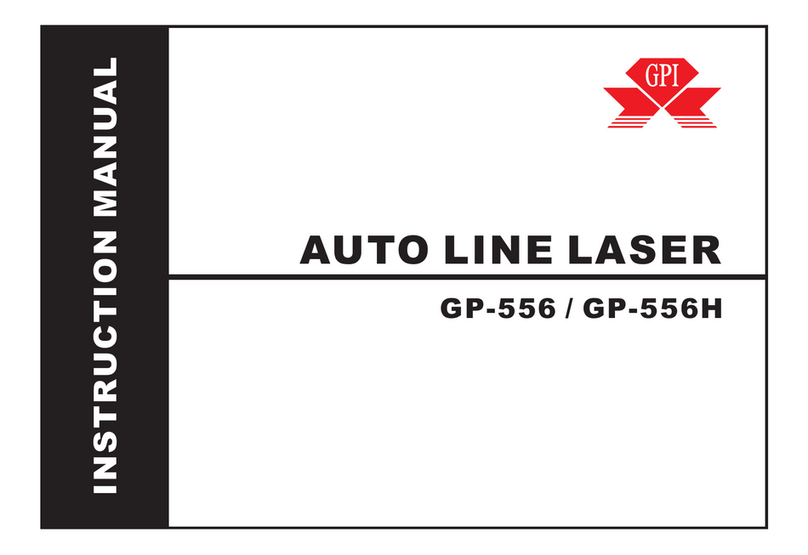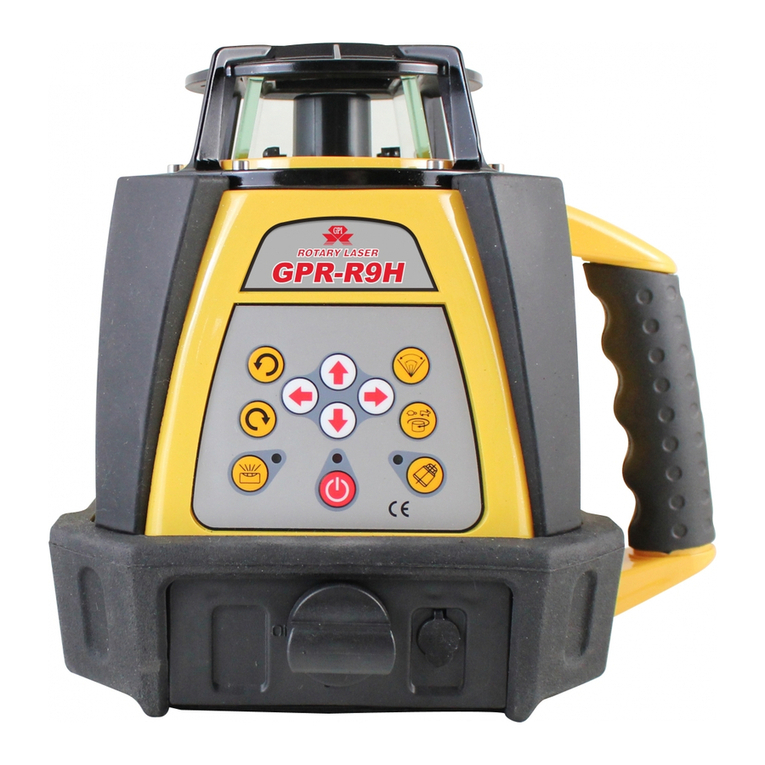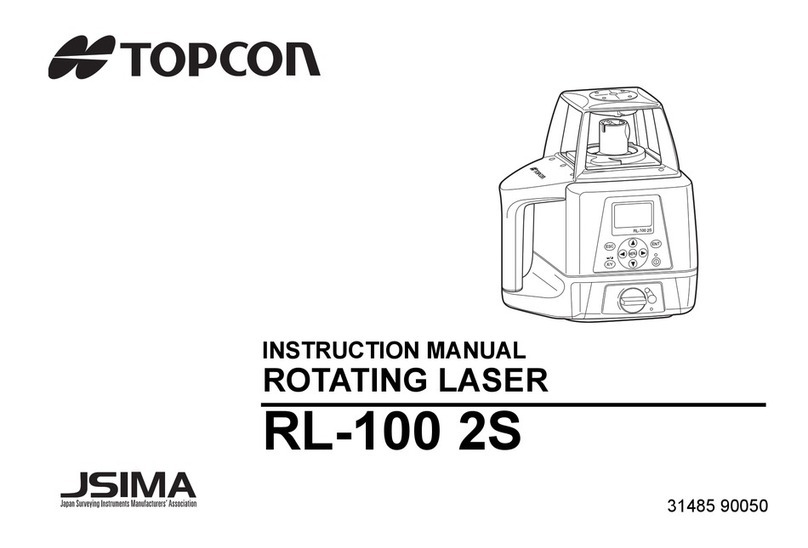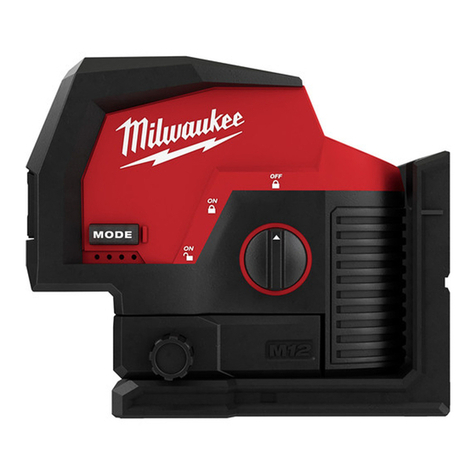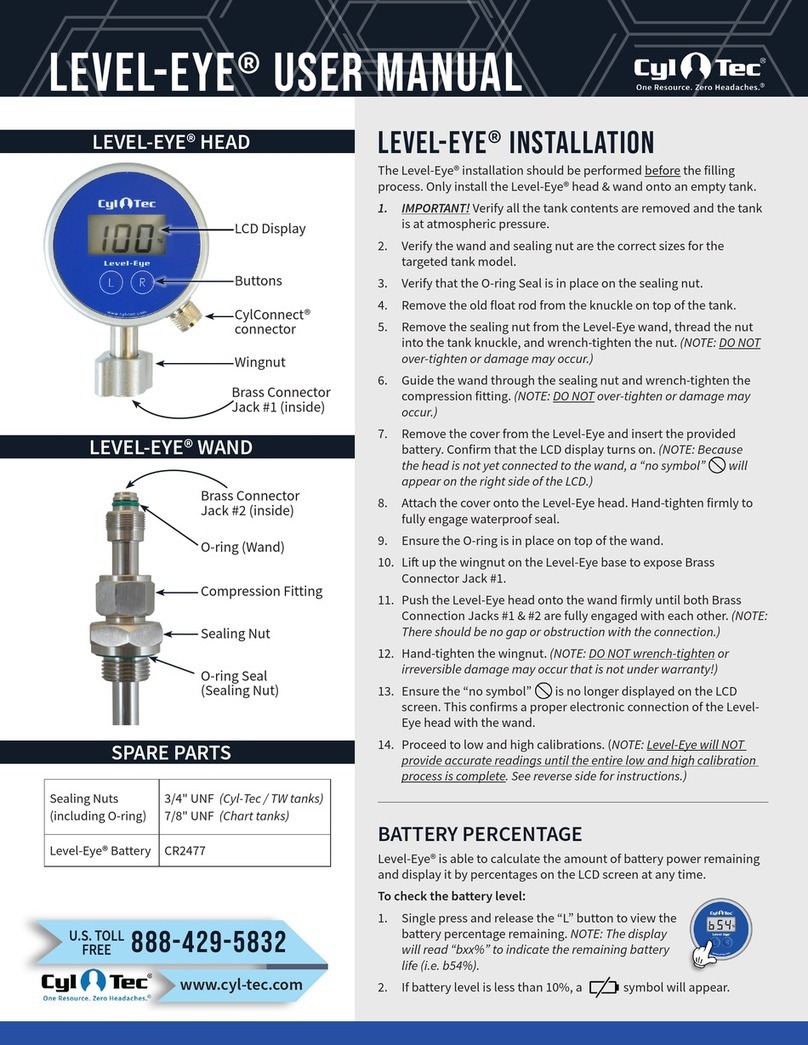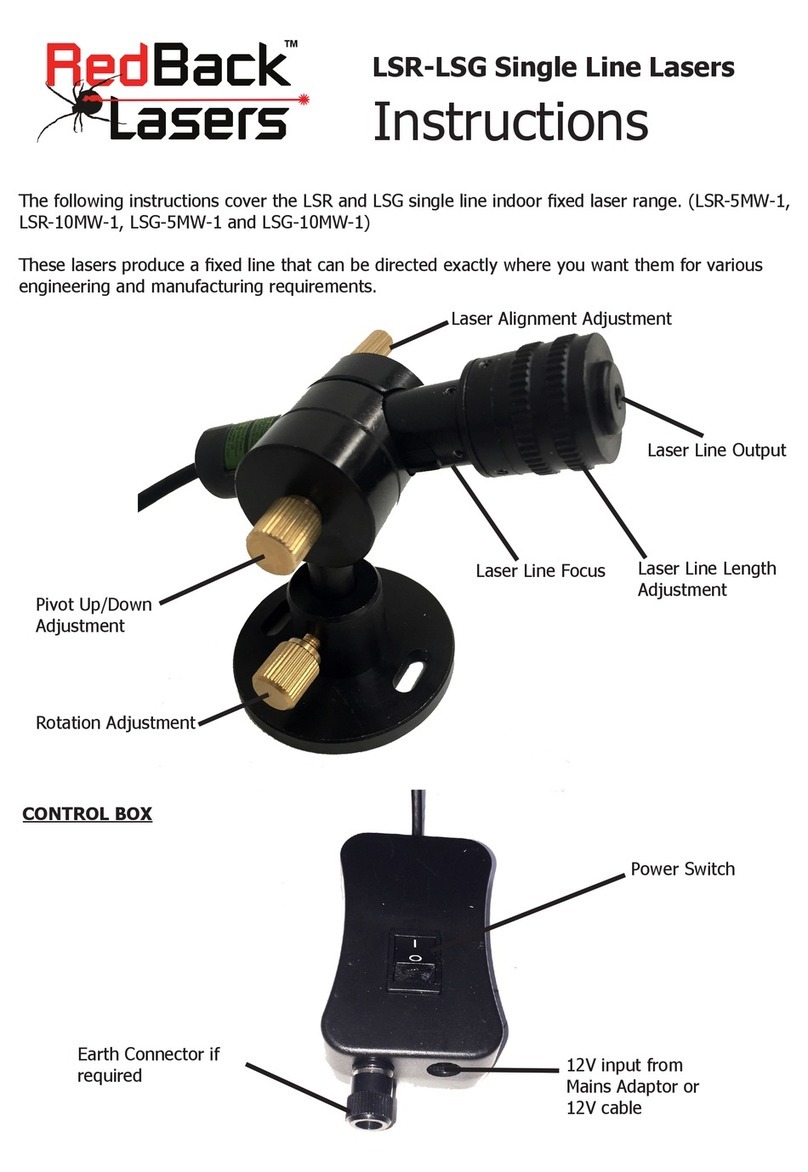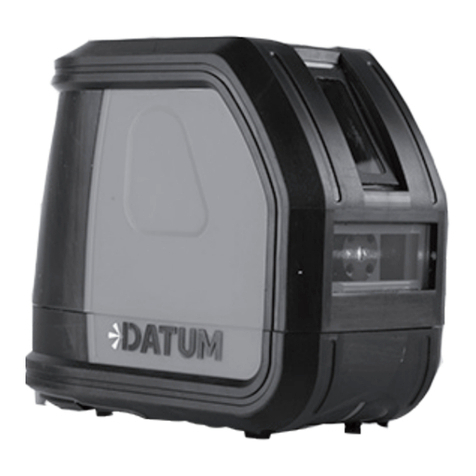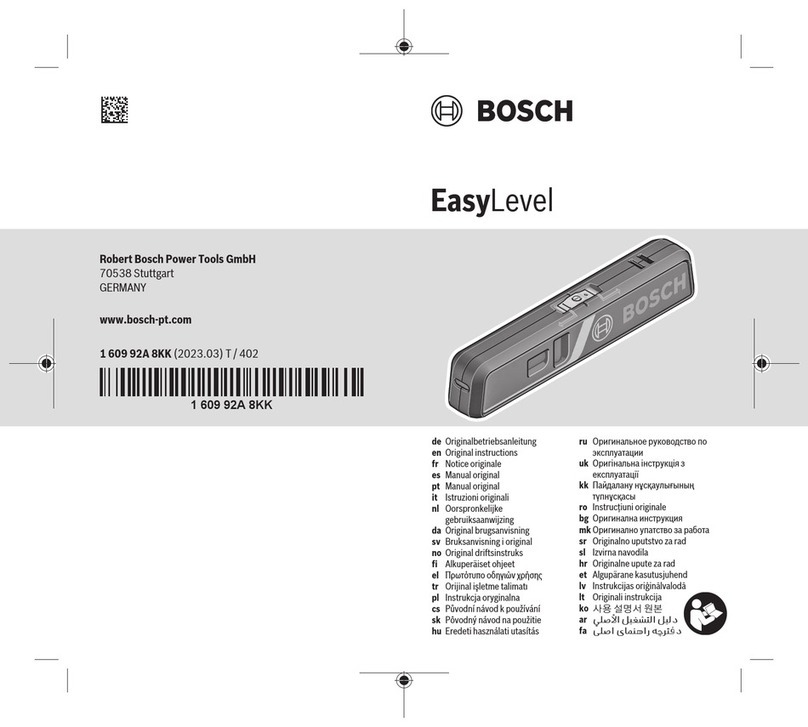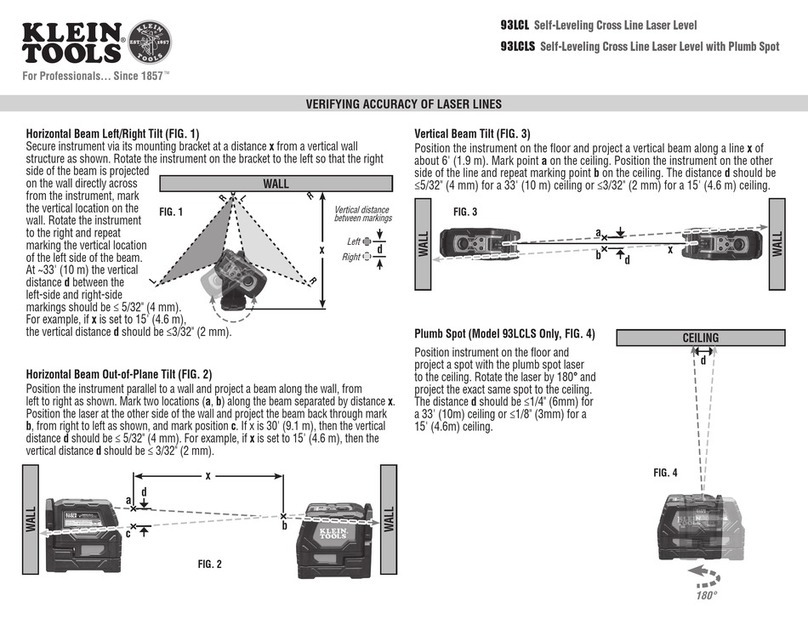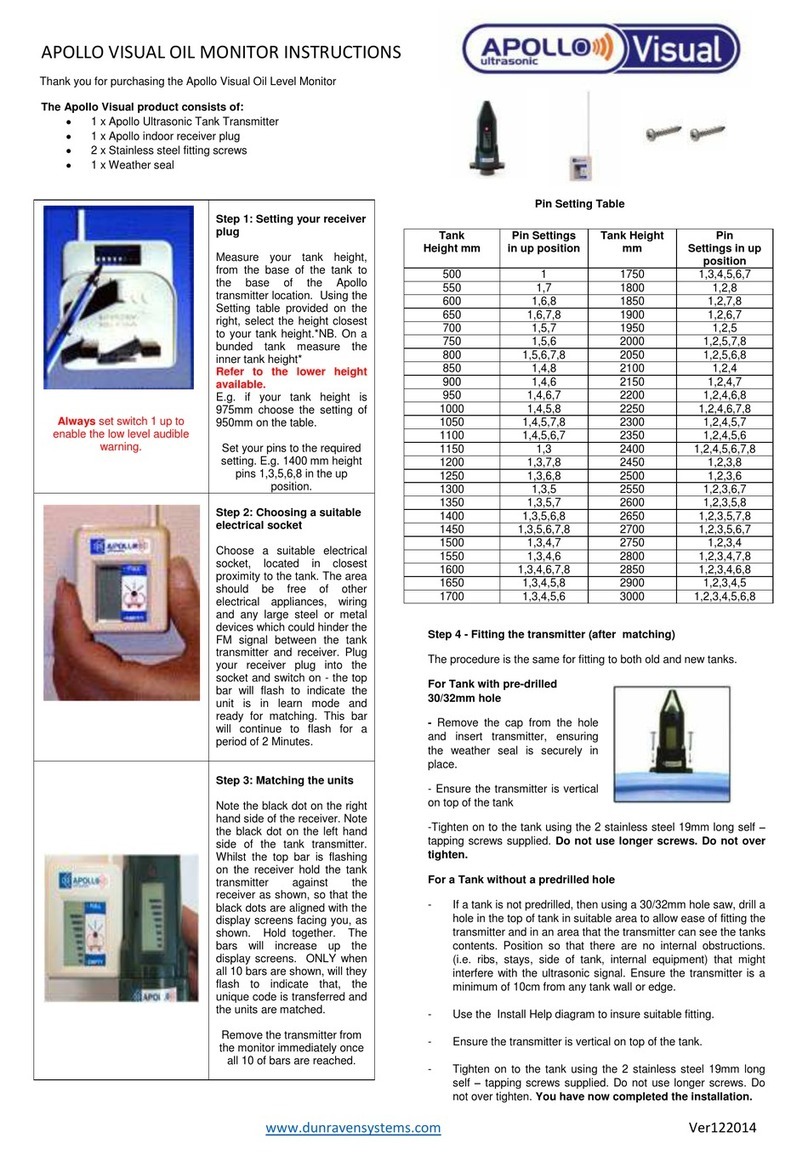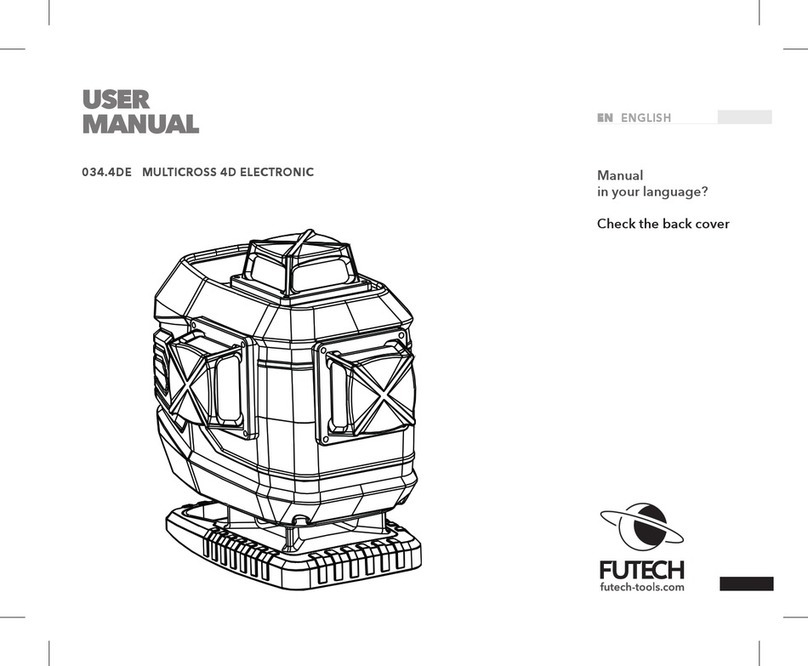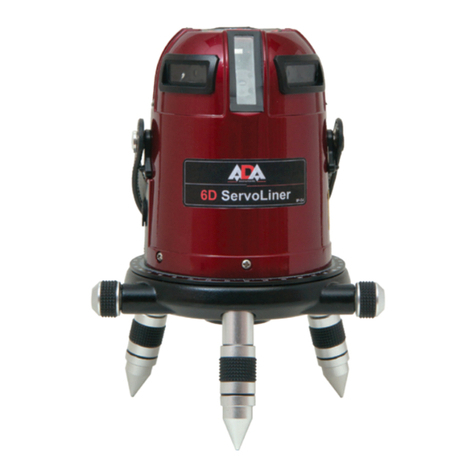GPI GPR-R220L User manual

Rotary Laser
INSTRUCTIONS FOR USE
GPR-R220L

- 1 -
Content
1) What is included with your GPR-R220L............................................................... - 2 -
2) Find your way around the GPR-R220L................................................................. - 3 -
3) Getting set up........................................................................................................... - 5 -
4) Horizontal Leveling................................................................................................. - 6 -
5) Sloping Leveling ...................................................................................................... - 7 -
6) Vertical Lines........................................................................................................... - 8 -
7) Other Functions....................................................................................................... - 8 -
8) The Detector........................................................................................................... - 10 -
9) The remote control .................................................................................................. - 0 -
10) Trouble shooting.................................................................................................... - 1 -
11) Specifications.......................................................................................................... - 2 -
Warnings and Precautions.......................................................................................... - 3 -

- 2 -
1) What is included with your GPR-R220L
Your GPR-R220L includes the following parts:
A) Main Instrument
B) Laser line detector and Bracket
C) Remote Control for Instrument
D) Charger
E) Target
F) Glasses
G) Hard Case with Foam Insert
H) A replaceable battery Pack
Please contact your supplier if any of the above parts are missing.

- 3 -
2) Find your way around the GPR-R220L
Plumb up glass
Laser module
Handle
Charge socket
LCD
Keypad panel
Optical glass

- 4 -
Plus/Right spin
Minus/Left spin
Scanning
Tilt/H.I alert
Slope setting
X/Y axis switch
Speed up
On/Off
automatic/Manual

- 5 -
3) Getting set up
Charging the Battery
The instrument normally comes with some
charge in the battery, however it is recommended
before initial use the battery is fully charged.
Insert the charger into the mains and the charging socket into the instrument or the battery
pack. Turn on the power. The charger will show shone of 3 modes.
Red flashing light-Battery not charging
Red light-Battery on Charge
Green light-Battery charged
If the red 1ight shows check the connection. If the light is flashing Please wait for
charging to complete. Once the green light shows the instrument is fully
charged-charging normally takes 7 hours to give 20 hours of use.
Setting up the instrument in horizontal mode

- 6 -
The instrument should be set on a solid base,ideally a tripod which is stable.
The instrument should be attached to the tripod using the screw that inserts into the
underside of the instrument.
The instrument will only self level if it is set up within 5 degrees of horizontal. If the
instrument appears level by eye then it should be within this range. Using the horizon as
a datum will help with this assessment. If the instrument looks tilted then adjust the
tripod to suit.
4) Horizontal Leveling
a) Set up the instrument as shown on the previous page.
b) Press the(green)button on the bottom left hand side of the Panel.
c) The instrument will Auto level and start spinning giving a Horizontal beam.

- 7 -
5) Sloping Leveling
a) Set up the instrument to work horizontally as shown in stages to c)on the previous
page
b) Press the“CAL”button to get the“X”value flashing on the screen。
c) Use the + and-buttons to get the required gradient in the “X” direction ( the X direction
is Parallel to the screen/digital Panel)
d) Press the “X/Y” button to get the “Y” figure flashing.
e) Use the + and-buttons to get the required gradient in the “Y” direction (the Y direction
is at right angles to the screen/digital Pane1)
f) Press the “X/Y” button again so that neither the X or Y letters are flashing.
g) After a few seconds the instrument should start counting up to the preset values. Once
the values are reached the laser will start to rotate again.
h) If the laser is disturbed by an impact or disturbance an audible alarm will sound to
indicate the laser may have moved. The Instrument should be cheeked to see if it has
shifted position. If the instrument remains in the same position push the “X/Y” button

- 8 -
and the unit will re- start and return to the grade previously set.
6) Vertical Lines
a) Once the instrument is in the position shown above
press the green button on the bottom left hand side of
the Panel.
b) The instrument will Auto level and start spinning giving
a Vertical beam.
7) Other Functions
A) Scan Mode
a) The scan Mode 1s to be used when you want the beam focused on a smaller range.

- 9 -
b) Press the [Sean Button] for a single point
c) Press the same button to get angles of approximately 10°,45°,90°and 180°
d) To change the direction of the point/ scan you can Press the+ or-button to move the
direction the beam is pointing .
B) Speed Control
a) To change the speed of the rotating beam pres「Hare/Tortoise Button」. b) Speeds of
120rpm,300rpm and 600rpm can be obtained .
C) Plumb up and down beams
a) The Instrument has both a plumb up beam and a plumb down beam.
b) These will be Vertical when the instrument is set up as per Page 4
c) The spots cannot be picked up by a detector and must be visually located.
D) Automatic drifts System/Tilt
a) Warns the user for a misaligned device.

- 10 -
b) When the instrument is in this mode ,there will be a signal on the LCD display to
alert user that the position of the instrument has changed.
8) The Detector
The detector will pick up a spinning beam when it crosses the electronic sensor
window. The detector has 3 buttons:
a) On/off button
b) A Sound button with 3 settings –of f- low - high.
c) A sensitivity button. This will either give a narrow or a broader range of detection.
When the detector is too high a slower beep be emitted, when too low ,afast beep will
be emitted,when same level as beam a continuous pitch will sound-at this Point the
centre of the detector is at the same alignment as the beam.
To get accurate results use the spirit bubble to keep the detector level.
The detector is powered by a standard 3v battery.

9) The remote control
The remote control will work to a distance of approximately 20m and is ideal for
adjusting the instrument while at the same time not disturbing it.
It is powered by two 1.5V AAbatteries.
When any of the buttons is activated a red LED light is emitted.
There are 7 buttons on the remote.(There is no Power button.)
The top triangle corresponds to the “CAL” button on the instrument.
The other 6 buttons correspond to those on the instrument as described in earlier sections.

- 1 -
10) Trouble shooting
The majority of problems that occur arise from the power source.
1) Cheek the batteries are installed correctly with the + and - in the correct orientation.
2) Check the Power rating of the batteries are correct - particularly if you are using
rechargeable batteries.
3) Please use the charger supplied with the instrument. While similar charges may fit the
instrument socket they may not be charging the batteries if the rating is not correct.

- 2 -
11) Specifications
Accuracy
±20〞(±3mm@30m)
Slope range
±10.00﹪
Automatic self-leveling range
5°
Laser source
Visible Laser Diode 635nmm
Classification
Class 2M or Class 3R
Operational range
500m dia . (with detector)
Rotational head speed
60,120,300,600,R.P.M
Approximate scan angles
10°;45°;90°;180°
IR Remote control
Available remote distanee:20m
Operation temperature
-20°C~+50°C(-4°F~+122°F)
Power supply
DC 4.8-6V(4 sections NI-MH battery)Battery
Pack replaceable(Ni-MH battery pack or
Alkaline battery pack,selectable)
Continuous working time
20hours
Waterproof and dustproof
IP54
Dimensions
160(L)X160(W)185(H)mm
Weight
3.0kg(w/batteries)

- 3 -
Warnings and Precautions
While the instrument is in operation be careful to avoid exposing your eyes to the laser
beam for long Periods.
A long exposure may be hazardous to your eyesight the laser beam is equivalent to a
Class 2 laser.
TRY to set the instrument at a height that is above eye level. This will he1p avoid
accidental exposure to the beam by both the user and passers by.
When the instrument is not in use remove the batteries to avoid internal damage.
Do not try to repair the instrument yourself. Have it repaired by an Authorized
Professional.
When setting up the instrument on a tripod please ensure that the Tripod is placed
firmly on/into the ground ,that the tripod legs are securely fastened and that the
instrument is securely screwed to the top of the tripod.
The instrument should not be used or stored in temperatures about 50 degrees Celsius
or below-20 degrees Celsius.

- 4 -
Store the instrument inside its carrying ease and away from moisture,dust and
vibration.(Do not store in the back of your vehicle)
.Avoid sudden changes in temperature. Allow the instrument to acclimatize before use.
Transport the instrument in its carrying case and always handle with Care.
Please follow the instructions given in this manual.

- 5 -
Memo

Giant Precision Instrument Co., Ltd.
No.16, Ln. 134, Liancheng Rd., Zhonghe Dist., New Taipei City 235, Taiwan
TEL:886-2-2246-7302 FAX:886-2-2246-7301
Table of contents
Other GPI Laser Level manuals
Popular Laser Level manuals by other brands
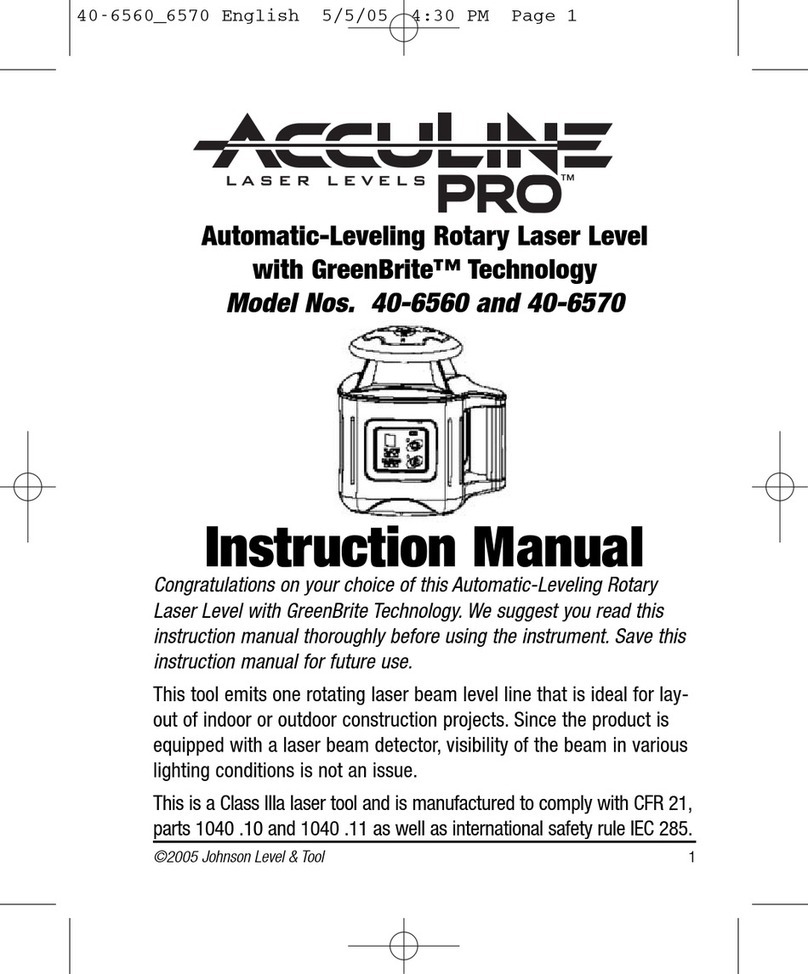
Johnson Level & Tool
Johnson Level & Tool 40-6560 instruction manual
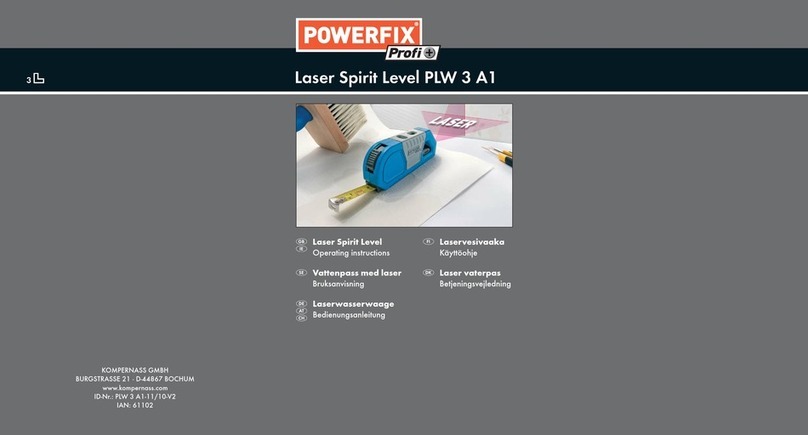
Powerfix Profi
Powerfix Profi PLW 3 A1 operating instructions
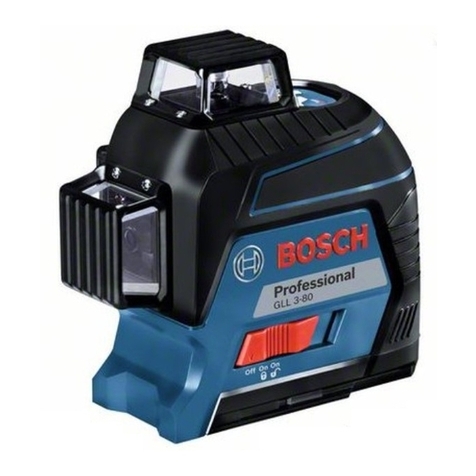
Bosch
Bosch GLL3-80 Operating/safety instructions
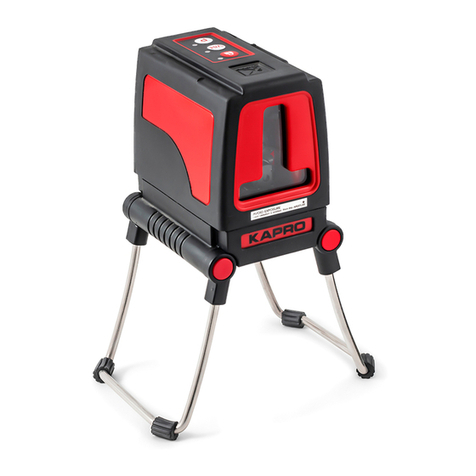
Kapro
Kapro Prolaser Plus user manual
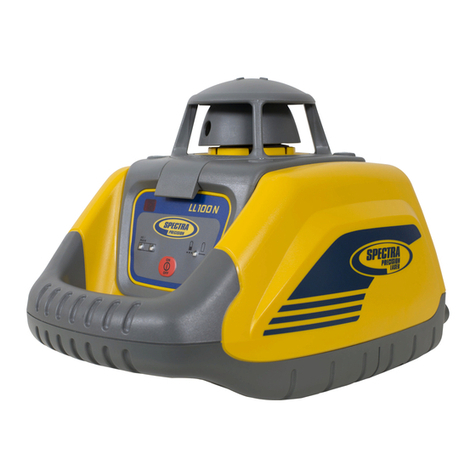
Spectra Precision
Spectra Precision LL100N Handy Tips & Advice
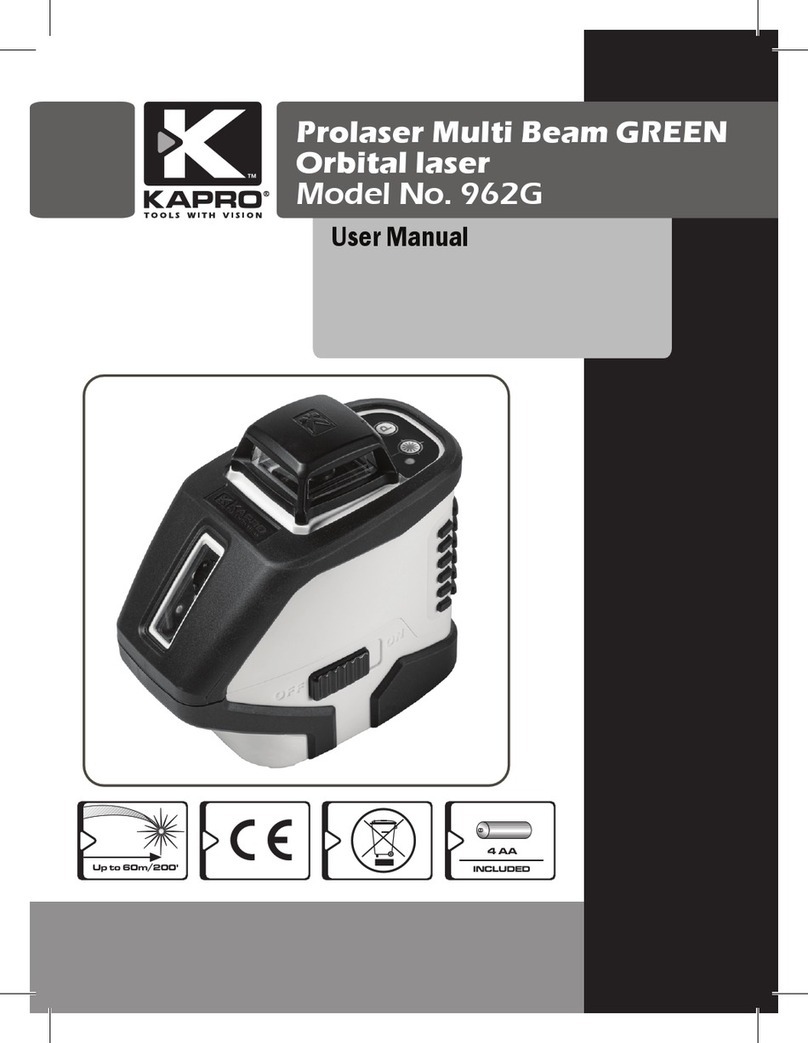
Kapro
Kapro Prolaser Multi Beam GREEN Orbital laser user manual

